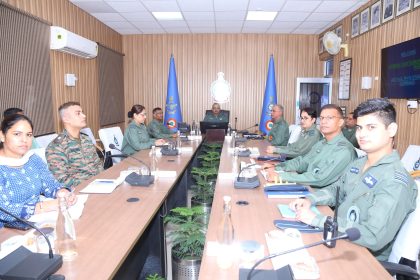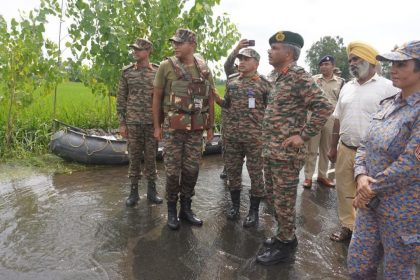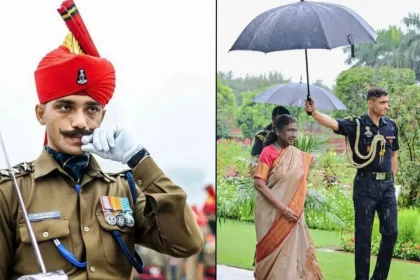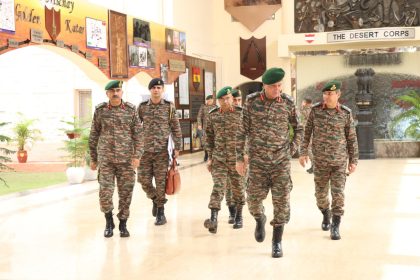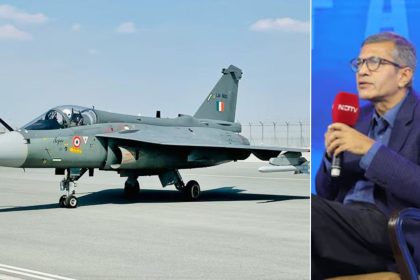Air Marshal Vijay Kumar Garg Visits Air Force Station Prahladpur, Highlights Modernisation and Welfare Initiatives
Air Officer Commanding-in-Chief Praises Depot’s Role in Logistics, Highlights Welfare Initiatives for Families.
Indian Army’s Western Command Leads Flood Relief Efforts in Border Areas
Lt Gen Manoj Kumar Katiyar Reviews Operations, Assures Continued Army Support in Flood-Hit Border States.
Indian Army Southern Command Chief Reviews Black Mace Brigade in Jaisalmer, Highlights Modernization Drive
Lt Gen Dhiraj Seth underscores future-ready modernization as Southern Command reviews Black Mace Brigade in strategically vital Jaisalmer.
Meet Major Rishabh Singh Sambyal: 4 Para ‘Dagger’, President’s ADC and Viral Internet Sensation
President’s ADC Major Rishabh Singh Sambyal: Elite Soldier, Viral Sensation, and Symbol of Excellence.
Lt Gen Dhiraj Seth Reviews Konark Corps’ Operational Readiness in Jodhpur
Lt Gen Dhiraj Seth Assesses Desert Corps’ Modernization and Readiness Amid Evolving Security Challenges.
First Two Tejas Mark 1A Fighters Likely by September-End: Defence Secretary RK Singh
Defence Secretary RK Singh Confirms September Delivery for First Two Tejas Mark 1A Jets, Highlights Indigenous Defence Push and Lessons…

